#Gorkha Nepal
Photo

The Gorkha Empire, 1559-1816.
by generic_maps
76 notes
·
View notes
Text

4 notes
·
View notes
Text
Barpak Sulikot Gaunpalika Vacancy 2081 for Employment Coordinator
Barpak Sulikot Gaunpalika Vacancy 2081 for Employment Coordinator. Interested and qualified candidates are invited to apply within 15 (fifteen) days from the date of publication of this notice.
CAREER OPPORTUNITY
Barpak Sulikot Gaunpalika Vacancy 2081 for Employment Coordinator
Barpak Sulikot Gaunpalika (Rural Municipality), Office of the Rural Municipal Executive, Takukot, Gorkha Notice for…

View On WordPress
0 notes
Text
Environment: The Landslide Problem! Where Natural Disasters are Getting More Deadly.
— By Summer Rylander | January 19, 2024
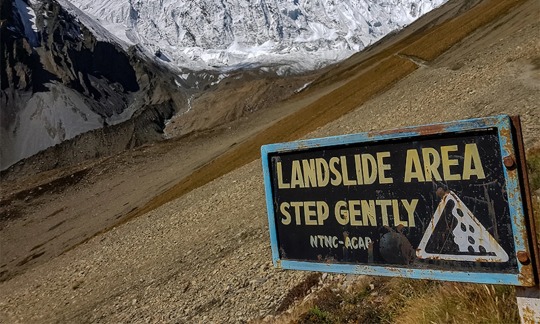
Lead Image: Anna Plucinska/Shutterstock
Just before noon on April 25, 2015, a devastating earthquake rocked central Nepal with a magnitude of 7.8. Approximately 9,000 people were killed, with thousands more injured and hundreds of thousands of buildings destroyed. The country is one of the most seismically active places on the planet. But its most concerning environmental hazard isn’t actually earthquakes—it’s landslides.
The Gorkha earthquake triggered some 25,000 landslides across central and western Nepal over the following weeks. Nepal has always suffered a remarkable number of landslides, but in the years since Gorkha, the count has rapidly increased. The question is, why are the numbers of landslides surging?
“The Landslide Numbers Really Begin To Ratchet Up After 2015.”
A recent study of landslide disaster data in Nepal found that between 2011 and 2020, the average annual “density” of landslides in Nepal jumped fourfold (to more than three events per 1,000 square kilometers). That’s a staggering increase. Nepal’s dramatic vertigo-inducing landscape of jagged snow-capped Himalayan peaks—Mt. Everest is just one of many—increasingly frequent and intense monsoon rains, and growing urbanization all played a part. But the researchers say the jump has a lot to do with the Gorkha earthquake and a lesser-known factor: roads.
Urban and semi-urban areas that had already been damaged during the Gorkha earthquake were most impacted by the increase in landslides, according to the data. This suggests that the Gorkha quake did some fundamental damage to the integrity of Nepal’s mountain soils—also supporting this idea, the landslide numbers really begin to ratchet up after 2015, with the density of events tripling in the five years after the disaster. Landslide frequency rose in all seasons, but particularly in the summer monsoon months, when torrential rains tear down Nepal’s slopes and lead to deadly flooding. Monsoon season in Nepal is projected to become even more intense and destructive in the future.
But another key culprit for the recent swell of landslides in Nepal may be a rise in urbanization—and the related construction boom that began in 1990 and continues today—the authors of the paper say. A new central government “started allocating huge budgets to local governments,” and large portions of that money was spent on road construction, says Keshab Sharma, a Geotechnical Engineer at BCG Engineering Inc., Canada, and an author of the new landslide study.
And these roads themselves became a problem, Sharma explains. In many cases, no land surveys were completed, nor were assessments required to determine how to most safely construct each roadway. Now many of these roads are destabilizing Nepal’s mountain slopes, especially during the rainy season.
The demand for new roads hasn’t fallen off. Nepal’s urban population increased from 17 percent to 21 percent between 2011 and 2020, and this movement is escalating demand. Of course, “people want the roads,” Sharma says.
As rainfall patterns change with our tumultuous climate and urban populations continue to grow, Sharma believes the best way to mitigate Nepal’s landslide risk is to design safer infrastructure policy—with enforcement. Building better roads, he says, could help Nepal build a highway to a safer future.
#Environment#Landslide Problems#Natural Disasters#Deadly#Nautilus#Summer Rylander#Earthquakes#Urban#Sami-Urban#Gorkha#Density#Nepal 🇳🇵#Canada 🍁 🇨🇦#BCG Engineering Inc.#Mount Everest#Himalayan Peaks
1 note
·
View note
Text
Big action by Nepal Police, case of trafficking of fighters of Nepalese Gorkha community to Russian Army for war exposed
NEPAL: Kathmandu Police has arrested a big gang. This gang was forcing people to be sent to Russia so that they could fight with the Russian army in the Ukraine war. Police gave this information on Wednesday. He said that the gang used to charge Rs 7 lakh to Rs 11 lakh from each person for arranging ‘visit’ visa and other documents for recruitment in the Russian Army. The step was taken after…

View On WordPress
#war#Breaking News#breaking news app#breaking news headlines#Exclusive News#Gorkha community#International Breaking News#Nepal Police#Russian Army#Trafficking of fighters#Ukraine war#Ukrainian army
0 notes
Text

Manaslu, Nepal: This most beautiful picture is taken from Lho village of North Gorkha, en route Manaslu Circuit Treks. It is situated at the elevation of 3,100 m-about a week long treks from Kathmandu. The Lho village is beautiful Gurung village with Bon Po followers as well as Buddhist old sect. There is a long Mani Walls, health post, Buddhist schools and a huge Monastery at the hill top of the village. The view of Mt. Manaslu 8,156 m is seen so pretty specially sun rise and sun sets time from Monastery. ...Manaslu is the eighth-highest mountain in the world at 8,163 metres above sea level. Wikipedia
275 notes
·
View notes
Text
History And Origin of Nepal: A journey through time
Lying right in the middle of the Himalayas between India and China, Nepal is a country that is full of a whole of history. The story it tells is of myths, legends, dynasties, and influences that flowed on the waves of both the Indian subcontinent and the Tibetan plateau. The origin of Nepal seems to be completely intertwined with geographical elements, religion, and cultural heritage. In this blog, one is introduced to the historical journey of Nepal and formation of Himalayas, from its root to the formation of a modern nation.
Mythological Beginnings: Legends of Nepal's Formation
The history of Nepal opens with mythological accounts about the origin. Ancient legends say that Kathmandu Valley was once a huge lake, inclusive of what today is considered the cultural and historical heart of Nepal. According to this, a Buddhist saint called Manjushree, coming from China, saw a lotus flower falling in the middle of the lake and wanted to reach it. At Chobar, he cut a gorge with his sword thereby allowing it to drain the water so that the valley could be habitable. Thus, the fertile land of the Kathmandu Valley came into being. This mythical event is symbolic of the birth of Nepal.
Another popular legend describes how the god Vishnu, in the avatar of a boar, or Varaha, raised Nepal out of the waters. These myths said much not only about how the people of Ancient Nepal viewed their land but also revealed the deep religious meaning always permeating Nepalese culture.
Unification of Nepal: The Rise of the Shah Dynasty
Nepal’s political landscape changed dramatically in the 18th century with the rise of Prithvi Narayan Shah, the ruler of the small principality of Gorkha. He embarked on a campaign to unify the various fragmented kingdoms and principalities of the region. After several attempts, Prithvi Narayan Shah successfully conquered the Kathmandu Valley in 1768, marking the beginning of the Shah dynasty and the creation of modern Nepal. Prithvi Narayan Shah's unification campaign laid the foundation for a strong, centralised kingdom. He strategically kept Nepal independent from both the expanding British Empire in India and the Qing Dynasty in China by maintaining a policy of isolation and diplomacy.
The Collision of India and Eurasia: Birth of the Himalayas
Nepal is home to Himalayas: the home to world's highest peaks, including Mt. Everest.The story of the Himalayas really started when the Indian subcontinent, shortly after it broke away from Gondwana around 100 million years ago, began its drift northward. There laid between the Indian plate and the Eurasian plate at that time the Tethys Ocean. In this process, the Indian plate was submerged underneath the Eurasian plate, and it is both slow and powerful. These movements created strong geological forces which pushed up the sedimentary rocks of the Tethys Ocean, hence creating the Himalayan mountain range.
The impact of the collision caused the Earth's crust to fold, that formed the towering peaks of the Himalayas. The immense pressure created large thrust faults, which caused the land to rise vertically. Over time, these processes built some of the highest mountains in the world, including Mount Everest (8,848 meters) and Kangchenjunga (8,586 meters), both of which are located in the Nepalese Himalayas.
Geological Zones of the Nepal Himalayas
The Nepalese Himalayas were divided into a number of distinct geological zones, which reflect their complex history of formation. These include the following:
Terai Plains: This is a flat, fertile region situated on the southernmost part of Nepal, marking the northern edge of the Indo-Gangetic plains. They actually were formed by sediments deposited by the rivers flowing down from the Himalayas.
Siwalik Hills: Lying just north of the Terai, Siwalik Hills are the youngest part of the Himalayas that were uplifted about 10 to 20 million years ago. It is a folded and faulted rock area which has been uplifted relatively recently.
3.The Mahabharat Range: This range lies north of Siwalik, much older, loftier, and with steeply descending slopes enclosing profound valleys. Metamorphic and sedimentary rocks common in this region bear the telltale presence of the gradual uplift that has occurred here over millions of years.
4.Lesser Himalayas: This zone lies north of the Mahabharat Range and consists of a series of hills and ridges that rise up to about 4,000 meters. The Lesser Himalayas are made up of older rocks, mainly sedimentary and metamorphic uplifted during the early phase of collision between the Indian and Eurasian plates.
5.Greater Himalayas: Higher or Greater Himalayas forms the central backbone of this mountain and contains all the highest peaks including Mt. Everest and Kangchenjunga. Ancient metamorphic rocks, mainly schist and gneiss, are dominant in this zone, which has undergone extreme heat and pressure for millions of years.
6.Tibetan Plateau: The Tibetan Plateau forms the northern boundary of the Greater Himalayas, and is rightly called the "Roof of the World." This high-altitude plateau, in turn, had been raised as the Indian plate moved northward and was thrust underneath the Eurasian plate.
Thus, the history of Nepal represents a tapestries history with myths, conquests, cultural achievements, and political upheavals. Starting from the mythological beginnings down to its present-day status as a republic.The history of the Himalayas in Nepal is a long geology that has taken millions of years to unfold. From the first collision between the Indian and Eurasian plates to the towering peaks that now define the region, the Himalayas remain a living testimony to the dynamic forces shaping our planet. That spectacle of beauty and grandeur, yet at the same time a grim reminder of the immense power of nature and the precarious balance between the geological processes of Earth and the fragile ecosystems which find life in their shadow. Nepal's journey through history has taken a path no less dramatic than the landscape it inhabits. As the nation continues to grow, its past shapes its future, guided by the aspirations of the people that populate it.
2 notes
·
View notes
Text
On This Day In History
September 25th, 1768: Nepal unifies after the aggressive military expansion by King Prithvi Narayan Shah of Gorkha.
48 notes
·
View notes
Text
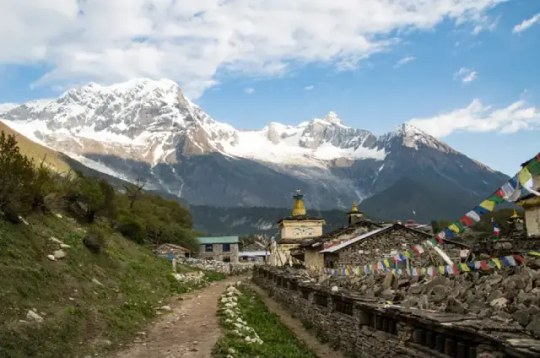


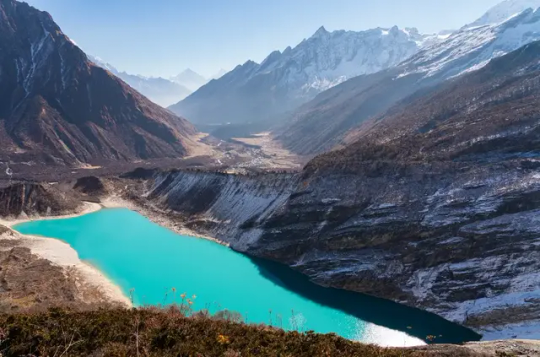
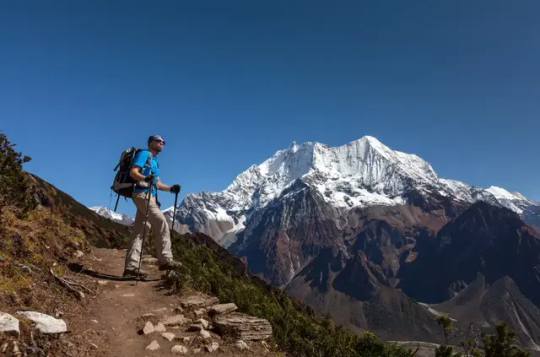
Samagaun (Samagaon) is a beautiful village in the Manaslu area of the Gorkha district in Nepal.
The small human settlement is a popular acclimatization stopover during the famous Manaslu Circuit Trek.
7 notes
·
View notes
Photo

Blue sky White #mountains Green 💚 forest ans yellow 🟡 Trees with strong sun 🌞 and easy hiking day on the #trekkingtrail of #manaslucircuittrek is what we looked with #nepaltrekking #shortmanaslutrekking #manaslutrek2023 #tsumvalleymanaslutrek #hikingroute #nepal #poland 📸 @trekwithapar (at Sama Gaon Gorkha Manaslu) https://www.instagram.com/p/CkP71Y5hiPB/?igshid=NGJjMDIxMWI=
#mountains#trekkingtrail#manaslucircuittrek#nepaltrekking#shortmanaslutrekking#manaslutrek2023#tsumvalleymanaslutrek#hikingroute#nepal#poland
2 notes
·
View notes
Video
youtube
Bus stuck in Muddy road in Nepal(Deadliest way of Gorkha Nepal)
0 notes
Text
Gold Smuggling Case: DRI raids businessman Rakesh Kumar Adukia’s house
The Department of Revenue Investigation (DRI) has raided the house of businessman Rakesh Kumar Adukia on suspicion of smuggling a quintal of gold seized at the Tribhuvan International Airport (TIA).
Recently, he made a suspicious trip to Hong Kong, India and Dubai shortly before the confiscation of the gold smuggled into Nepal.
The DRI raided his house based at Kamalpokhari as part of investigation after he made a suspicious trip, recently. According to the Department sources, Adukia is on the run.
It is suspected that a company named Ready Trade Pvt, which brought quintals of gold, was also established according to Adukia's plan. The department is investigating this issue.
Prior to this, Adukia was also involved in the Gorkha Development Bank scam. He is also a controversial figure in the stock business.
Businessman Adukia, who is already under the department's surveillance, last traveled to India on June 26 from TIA. It seems that he reached Hong Kong from India and came to Nepal via Dubai on July 5.
After he came to Nepal, it seems that gold entered Nepal from Hong Kong. Hence, the Department placed him under suspicion and raided his house today.
0 notes
Text
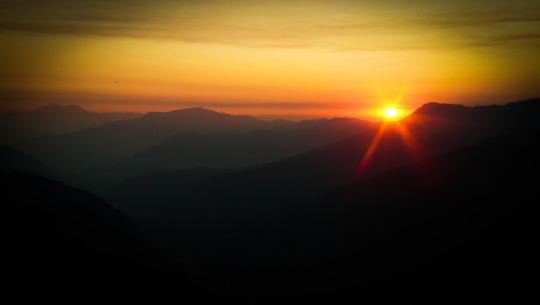
2 notes
·
View notes
Text
Meet Adukia: A most-wanted fugitive in the 100kg gold smuggling case

The Department of Revenue Investigation (DRI) has launched a manhunt for Rakesh Kumar Adukia, who is one of the two prime suspects on the DRI 'radar' since the seizure of around 100 kg of smuggled gold from Tribhuvan International Airport (TIA), Kathmandu.
It is suspected that Adukia is on the run after he drew media attention on his alleged involvement in gold smuggling. Not only him, but his son has also reportedly fled to New Delhi after the seizure of the gold, according to DRI sources. Although it was found that he was involved in smuggling gold into Nepal from Hong Kong, he managed to flee because the authorities did not take timely action to arrest him.
The DRI raided his house in Kamalpokhari on Wednesday evening, a week after the gold was recovered, but he was not there. Although some documents were found, Adukia had already fled.
Controversial businessman Adukia has been trading silver since quite some time after establishing an office in Hong Kong. Earlier, he was involved in the Gorkha Development Bank scam as well. He was also active in the trading of stock markets till 2009.
Adukia, who happens to be a relative of Laxmi Bank's then owner Rajendra Khetan, fled without building a tower after taking a loan of Rs 900 million from Gorkha Bank to build a financial tower in Kamaladi. After 2009, Adukia opened a commodity marketing company called Wealth Exchange.
According to sources, he has an office in Kowloon City, Hong Kong. Sources claimed that not only him, but also other businessmen involved in gold smuggling have offices in Hong Kong and from there they play a supporting role in gold smuggling. Sources have claimed that 'Ready Trade' that brought about 100 kg of gold concealed in brake shoes was also opened according to his plan.
“An investigation is now underway. Investigation is being done on the basis of facts and evidence,” said Navraj Dhungana, the director general of the DRI.
The DRI also raided the showroom of Ready Trade after it was discovered that gold was smuggled by concealing it in various imported goods from Hong Kong. Adukia's involvement came to light during the investigation after the seizure of the smuggled gold brought through the Cathay Pacific. Based on this, the department raided his residence.
A recent travel history of businessman Adukia shows that he flew from Kathmandu to New Delhi on April 13 on board a Nepal Airlines Corporation flight number RA 217, and from there to Hong Kong and arrived in Kathmandu on April 19 via Bangkok’s Thai Smile flight number W0319.
Similarly, on June 26, he reached Hong Kong again via New Delhi at 12:30 AM in flight number RA 0217 of Nepal Airlines Corporation. After a 12-day stay, he arrived in Kathmandu on a Fly Dubai flight from Hong Kong via Dubai on July 5. After that, smuggled gold was recovered in Nepal.
“We have seen his travel details. The trip itself is questionable. His past track record of taking loans from banks and financial institutions of Nepal has raised suspicion. Investigation is underway,” said an official of the DRI.
Before that, according to the information provided by the DRI, Adukia left Kathmandu for Hong Kong on May 26 and returned back to Kathmandu five days later on May 30.
He also went to Hong Kong on January 14. After staying for a week, he returned to Kathmandu in Cathay Pacific on January 21. Adukia was placed under suspicion radar on the day the smuggled gold was recovered by the DRI.
Businessman Deepak Malhotra, who was under suspicion along with him, held a press conference claiming that he was not involved in gold smuggling.“Adukia absconded when the DRI delayed arresting him,” said an official of the DRI. According to him, Adukia got a chance to escape because it took time to gather facts and evidence against him.
0 notes
Text
Meet Adukia: A most-wanted fugitive in the 100kg gold smuggling case

The Department of Revenue Investigation (DRI) has launched a manhunt for Rakesh Kumar Adukia, who is one of the two prime suspects on the DRI 'radar' since the seizure of around 100 kg of smuggled gold from Tribhuvan International Airport (TIA), Kathmandu.
It is suspected that Adukia is on the run after he drew media attention on his alleged involvement in gold smuggling. Not only him, but his son has also reportedly fled to New Delhi after the seizure of the gold, according to DRI sources. Although it was found that he was involved in smuggling gold into Nepal from Hong Kong, he managed to flee because the authorities did not take timely action to arrest him.
The DRI raided his house in Kamalpokhari on Wednesday evening, a week after the gold was recovered, but he was not there. Although some documents were found, Adukia had already fled.
Controversial businessman Adukia has been trading silver since quite some time after establishing an office in Hong Kong. Earlier, he was involved in the Gorkha Development Bank scam as well. He was also active in the trading of stock markets till 2009.
Adukia, who happens to be a relative of Laxmi Bank's then owner Rajendra Khetan, fled without building a tower after taking a loan of Rs 900 million from Gorkha Bank to build a financial tower in Kamaladi. After 2009, Adukia opened a commodity marketing company called Wealth Exchange.
According to sources, he has an office in Kowloon City, Hong Kong. Sources claimed that not only him, but also other businessmen involved in gold smuggling have offices in Hong Kong and from there they play a supporting role in gold smuggling. Sources have claimed that 'Ready Trade' that brought about 100 kg of gold concealed in brake shoes was also opened according to his plan.
“An investigation is now underway. Investigation is being done on the basis of facts and evidence,” said Navraj Dhungana, the director general of the DRI.
The DRI also raided the showroom of Ready Trade after it was discovered that gold was smuggled by concealing it in various imported goods from Hong Kong. Adukia's involvement came to light during the investigation after the seizure of the smuggled gold brought through the Cathay Pacific. Based on this, the department raided his residence.
A recent travel history of businessman Adukia shows that he flew from Kathmandu to New Delhi on April 13 on board a Nepal Airlines Corporation flight number RA 217, and from there to Hong Kong and arrived in Kathmandu on April 19 via Bangkok’s Thai Smile flight number W0319.
Similarly, on June 26, he reached Hong Kong again via New Delhi at 12:30 AM in flight number RA 0217 of Nepal Airlines Corporation. After a 12-day stay, he arrived in Kathmandu on a Fly Dubai flight from Hong Kong via Dubai on July 5. After that, smuggled gold was recovered in Nepal.
“We have seen his travel details. The trip itself is questionable. His past track record of taking loans from banks and financial institutions of Nepal has raised suspicion. Investigation is underway,” said an official of the DRI.
Before that, according to the information provided by the DRI, Adukia left Kathmandu for Hong Kong on May 26 and returned back to Kathmandu five days later on May 30.
He also went to Hong Kong on January 14. After staying for a week, he returned to Kathmandu in Cathay Pacific on January 21. Adukia was placed under suspicion radar on the day the smuggled gold was recovered by the DRI.
Businessman Deepak Malhotra, who was under suspicion along with him, held a press conference claiming that he was not involved in gold smuggling.“Adukia absconded when the DRI delayed arresting him,” said an official of the DRI. According to him, Adukia got a chance to escape because it took time to gather facts and evidence against him.
1 note
·
View note
Text
Tsum Valley Trek: A Journey into Nepal's Hidden Gem
The Tsum Valley, located in northern Nepal near the Tibetan border, is a wild and pristine environment. Unlike Nepal's more renowned trekking routes, Tsum Valley remains a hidden gem, providing hikers with a one-of-a-kind and culturally diverse experience. With its stunning scenery, old monasteries, and rich cultural legacy, the Tsum Valley Trek is a wonderful adventure for those seeking isolation and spiritual connection.
Why Choose the Tsum Valley Trek?
The Tsum Valley, often referred to as the "Hidden Valley," is a sacred Himalayan pilgrimage valley situated in a remote corner of the Gorkha district. The trek to Tsum Valley is a journey through time, offering an intimate glimpse into the Tibetan Buddhist culture that has remained largely unchanged for centuries. The valley is home to ancient monasteries, Mani walls, and chortens, where the spiritual practices of the locals are an integral part of daily life.
Unlike the bustling trails of the Everest or Annapurna regions, the Tsum Valley Trek is less traveled, providing a peaceful and meditative trekking experience. The valley was only opened to trekkers in 2008, which has allowed it to maintain its authenticity and cultural richness. For trekkers looking to escape the crowds and explore a region where tradition and spirituality are deeply rooted, Tsum Valley is the perfect destination.
Highlights of the Tsum Valley Trek
Cultural Immersion: The Tsum Valley is predominantly inhabited by the Tsumbas, an ethnic Tibetan community. The trek offers an opportunity to engage with the locals, learn about their customs, and witness their unique way of life. The valley is dotted with ancient monasteries such as Mu Gompa and Rachen Gompa, where you can observe Buddhist rituals and even participate in meditation sessions.
Scenic Beauty: The trek takes you through diverse landscapes, from lush green forests and cascading waterfalls to terraced fields and barren alpine terrain. The valley is surrounded by majestic peaks, including Ganesh Himal, Sringi Himal, and Boudha Himal. The serene and untouched environment makes the Tsum Valley Trek a haven for nature lovers and photographers.
Sacred Sites: The Tsum Valley is steeped in religious significance, with several sacred sites along the trek. Milarepa's Cave, where the famous Tibetan saint Milarepa is believed to have meditated, is a must-visit for those seeking spiritual solace. The region is also known for its Mani walls, intricately carved stone slabs with Buddhist prayers, which add to the spiritual ambiance of the trek.
Trek Itinerary Overview
The Tsum Valley Trek typically takes around 18 to 21 days, starting from the bustling town of Arughat or Soti Khola and following the Budhi Gandaki River through the Manaslu region before entering the secluded Tsum Valley.
Day 1-2: Drive from Kathmandu to Soti Khola and begin the trek to Machha Khola, passing through terraced fields, rivers, and small villages.
Day 3-5: Continue trekking along the Budhi Gandaki River, crossing suspension bridges and gradually ascending to the village of Philim, the gateway to Tsum Valley.
Day 6-9: Enter Tsum Valley and trek through the villages of Chumling, Chhokangparo, and Nile. Visit Rachen Gompa and experience the unique culture of the Tsumbas.
Day 10-12: Reach Mu Gompa, the highest point of the trek, and explore the sacred sites, including Milarepa's Cave. Enjoy panoramic views of the surrounding peaks.
Day 13-15: Retrace your steps back through the valley, savoring the serene landscapes and warm hospitality of the locals.
Day 16-19: Continue the descent to Soti Khola and drive back to Kathmandu, reflecting on the incredible journey.
Best Time to Trek
The best time to undertake the Tsum Valley Trek is during the spring (March to May) and autumn (September to November) seasons. During these months, the weather is stable, the skies are clear, and the temperatures are moderate, making for ideal trekking conditions. The spring season is particularly beautiful, with rhododendron forests in full bloom, adding vibrant colors to the landscape.
Permits and Regulations
Since Tsum Valley is a restricted area, trekkers are required to obtain a special permit in addition to the Manaslu Conservation Area Permit (MCAP) and the Annapurna Conservation Area Permit (ACAP). It is mandatory to trek with a licensed guide and in a group of at least two people, as per the regulations of the Nepalese government.
Final Thoughts
The Tsum Valley Trek is not just a trek; it's a journey into a world where time seems to stand still, and spirituality is woven into the fabric of daily life. For those seeking an off-the-beaten-path adventure that offers cultural immersion, stunning natural beauty, and a sense of tranquility, the Tsum Valley Trek is an experience that will leave a lasting impression on your soul. Whether you are a seasoned trekker or a first-time adventurer, the Tsum Valley will captivate your heart and inspire your spirit.
0 notes